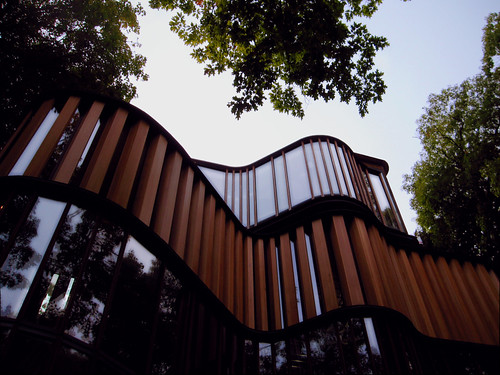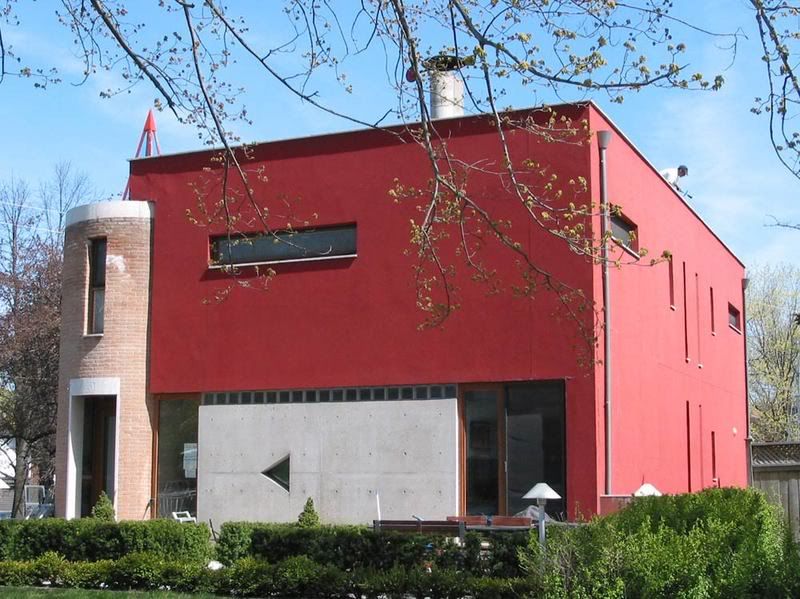It's great to see this thread alive, with the busy week I've had I haven't had the time to visit UT. Without further ado:
Lawren Harris House, 1931
2 Ava Crescent
 Photo by Bob Krawczyk
Photo by Bob Krawczyk
This is the preeminent residential Art Deco property in Toronto, which also is significant for being the residence of the Group of Seven painter. Harris had gathered inspiration on a European trip. He commissioned Alexandra Biriukova for the design of the eight thousand square foot mansion. It is distinctly Art Deco on the inside and out, for instance with those massive lanterns, or the curving walls inside. The landscaping was done by Janet Rosenberg.
____________
Evergreen Garden Residence, 2006
6 Evergreen Gardens
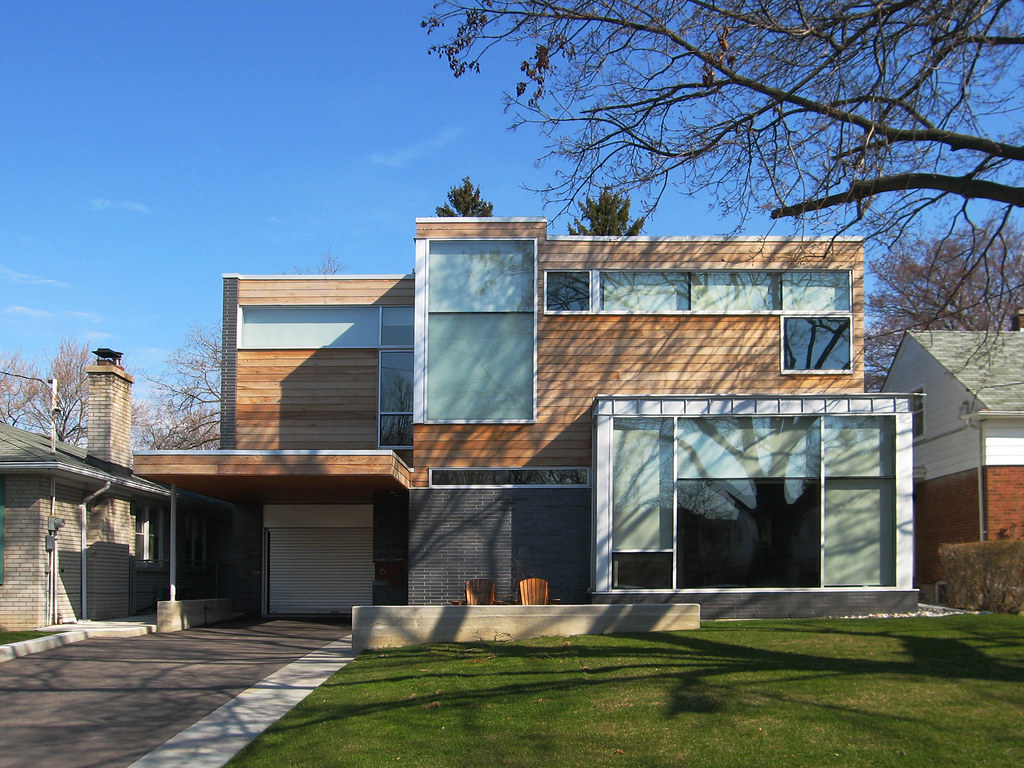 Photo by livinginacity on Flickr
Photo by livinginacity on Flickr
This house was designed by an architect previously unmentioned on UT,
Drew Mandel. The asymmetry and still modest scale is an exquisite continuation of the modernist spirit of the postwar houses.
____________
83A Marlborough Avenue, 2002
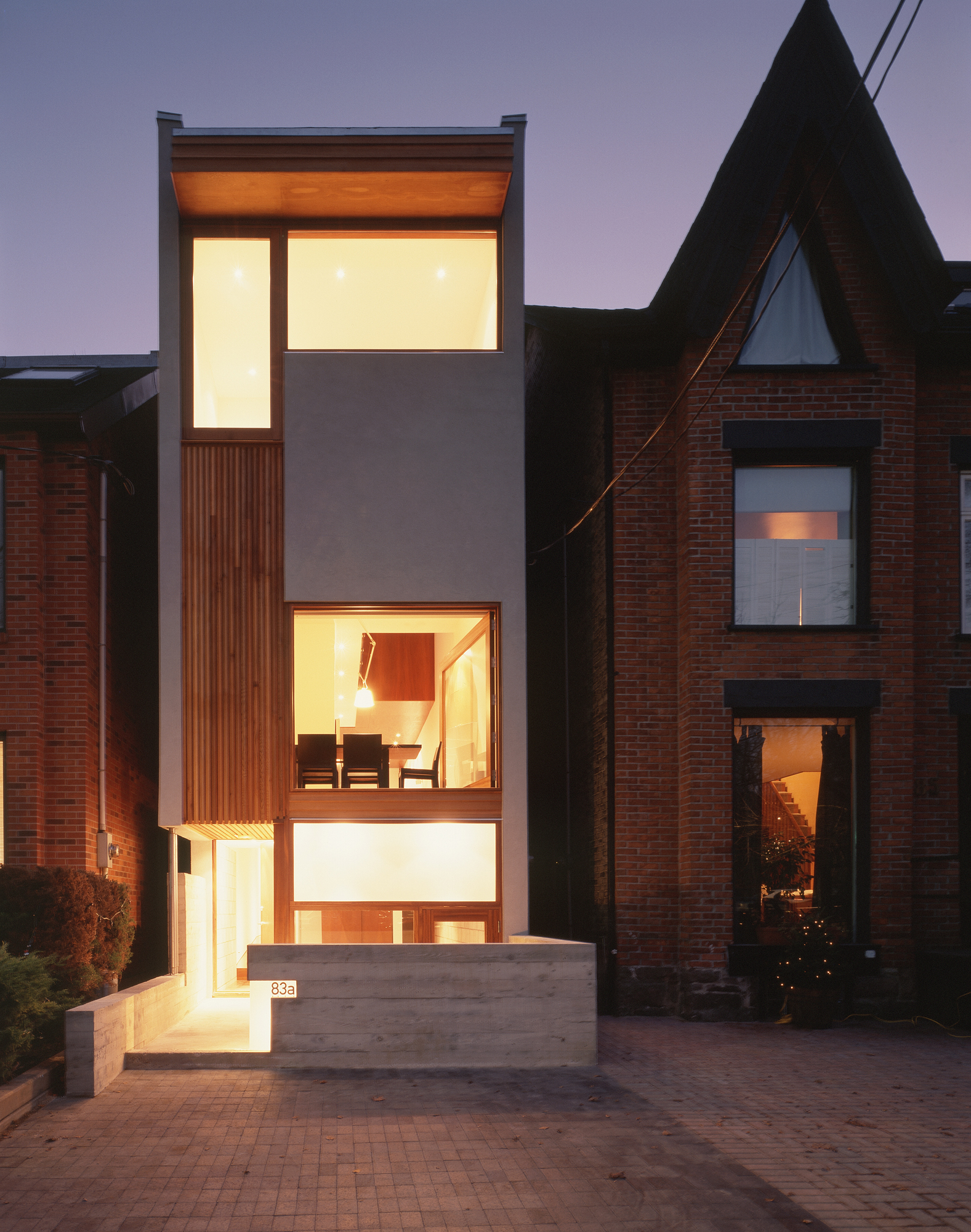 Photo from Drew Mandel Architects
Photo from Drew Mandel Architects
Mandel's most famous and award-winning building so far has been built to more urban dimensions; the lot is thirteen feet wide. He was teased that the one hundred fifty thousand dollar lot could only accommodate a bowling lane. He managed to overcome the limitations to produce a bright house with high ceilings, interesting interior materials, and leaving room for a back yard.
____________
Fraser House, 1968
4 Old George Place
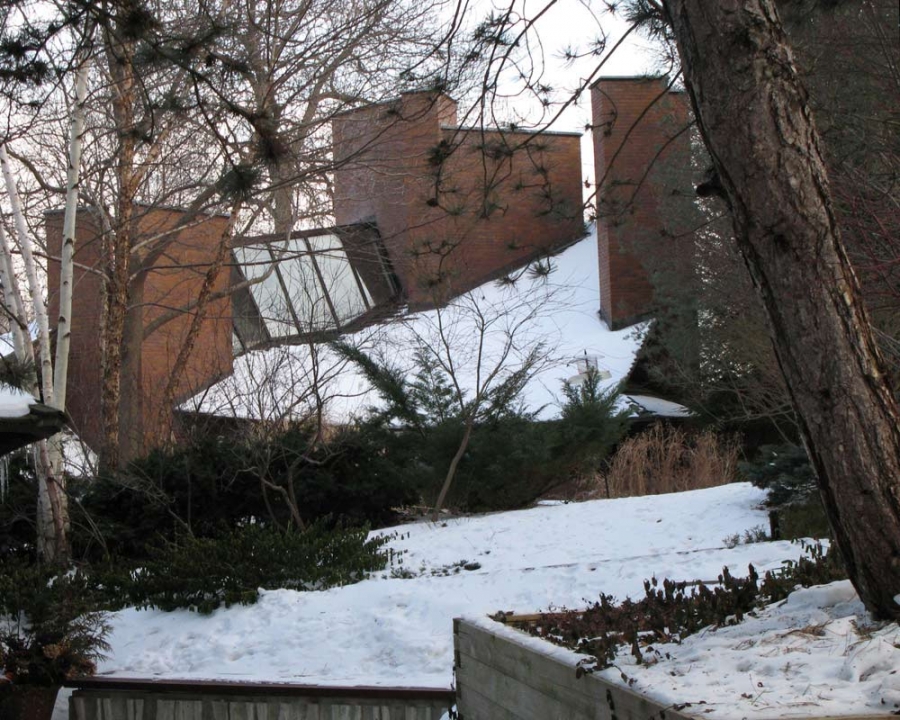 Photo by Bob Krawczyk
Photo by Bob Krawczyk
This is a house that's often mentioned, yet rarely photographed it seems. This is likely due to the large setback and vegetation. It's significant because it was conceived by
Ron Thom, the BC native who also composed the masterplan and designed the buildings for both the U of T's Massey College and
Trent University's original buildings. Interestingly enough, Drew Mandel cites this house as a source of inspiration (in
this article).
____________
Wolf House, 1974
51 Roxborough Drive
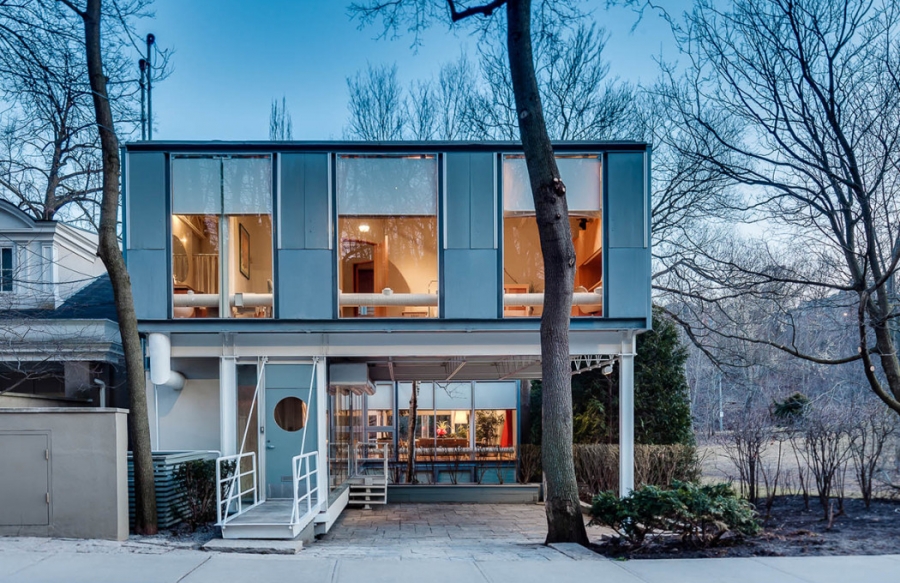 Photo from The Spaces (via Architectural Conservancy Ontario)
Photo from The Spaces (via Architectural Conservancy Ontario)
This is another house by Barton Myers. It continued Myers' experimentation with the use of off-the-shelf industrial components in his architecture. At the time he was working on prototypes for mass-produced housing, so perhaps it's ironic that his modernism ultimately produced such a unique Toronto house.
____________
103 Hudson Drive, circa 1950
 Photo by islets on Flickr
Photo by islets on Flickr
This noticeably more conservative house is from the immediate postwar era, designed by G.H. Piersol. The circular windows and colour are playful touches, and unlike the typical postwar subdivision bungalow, this house features a flat roof.
